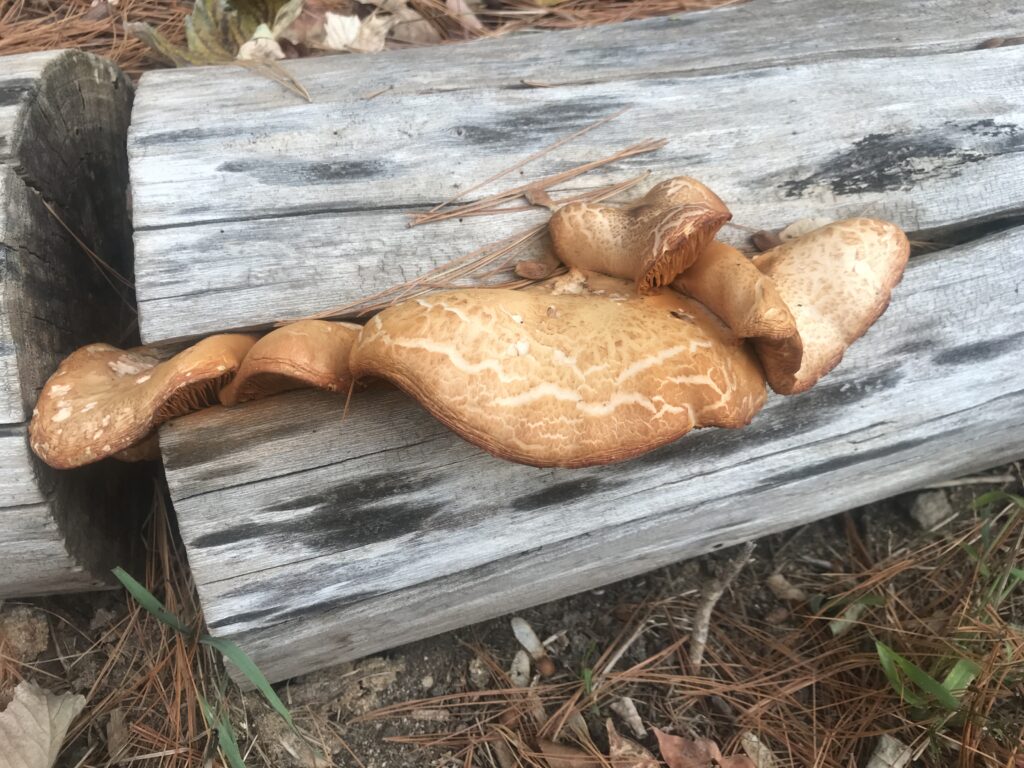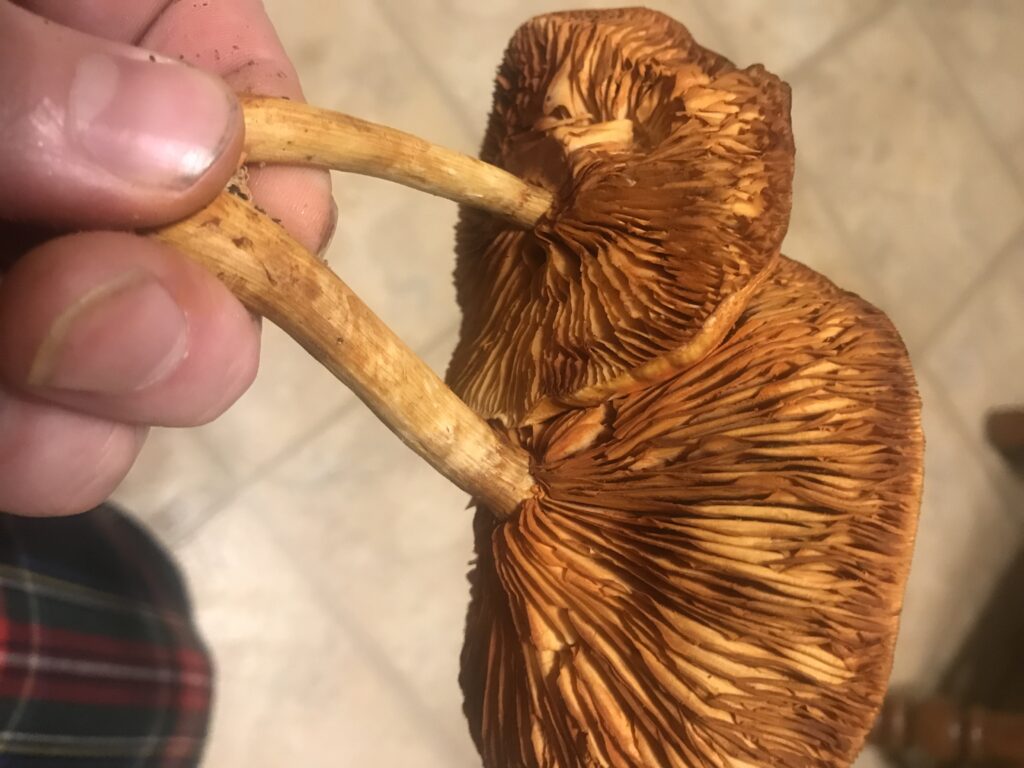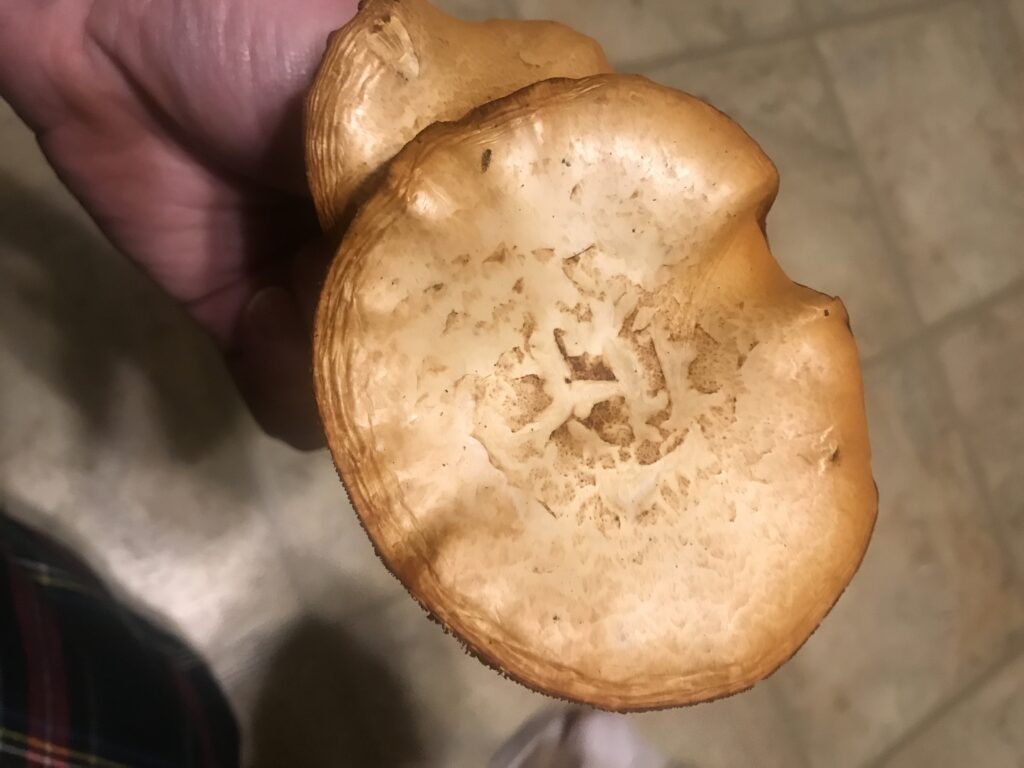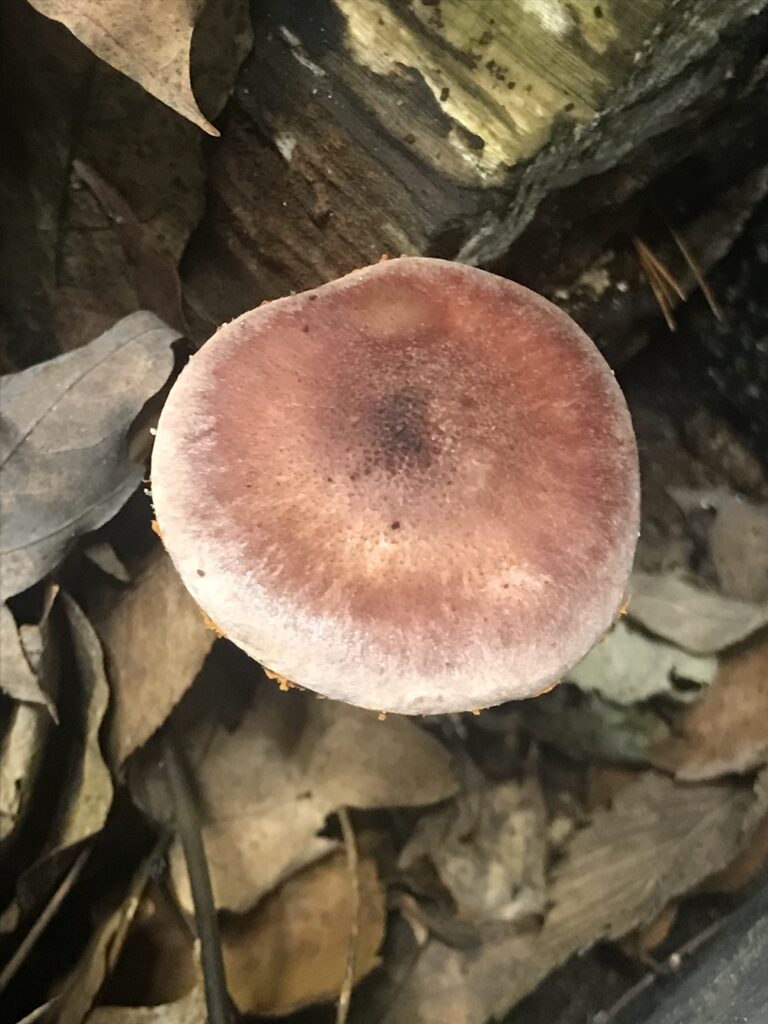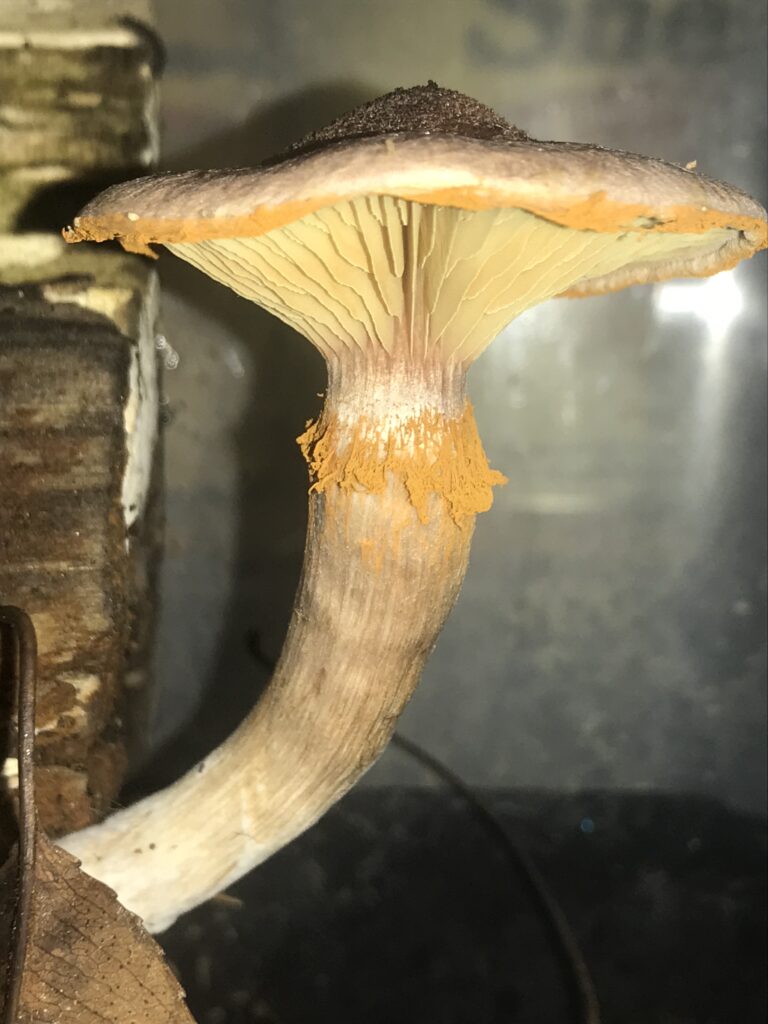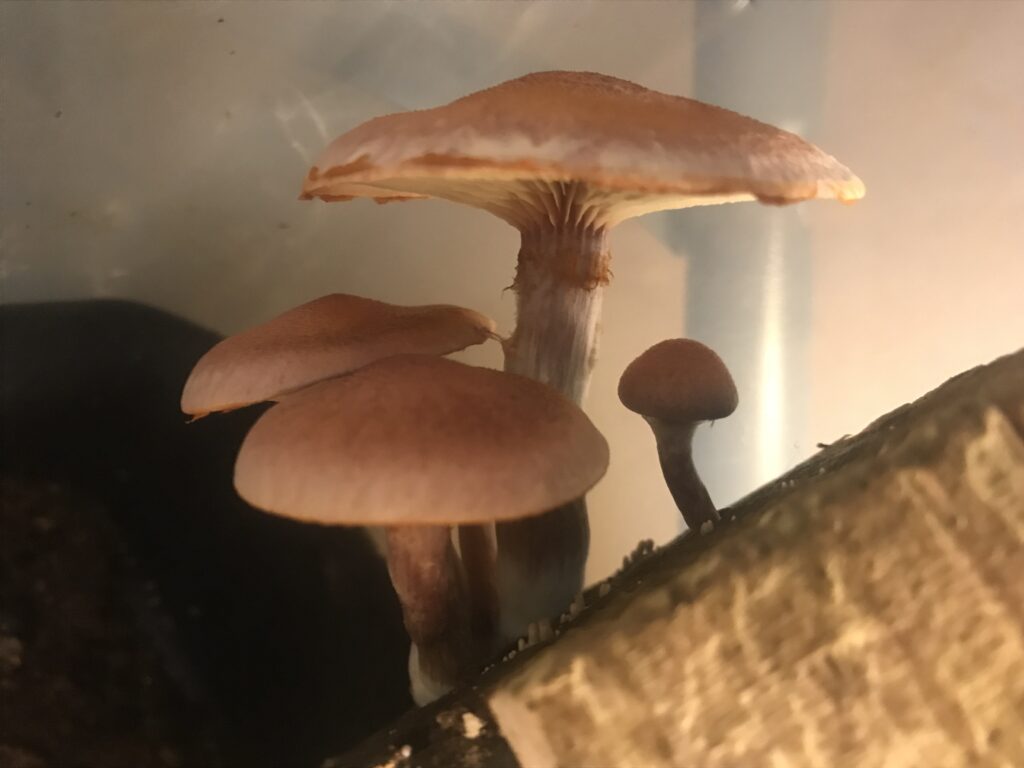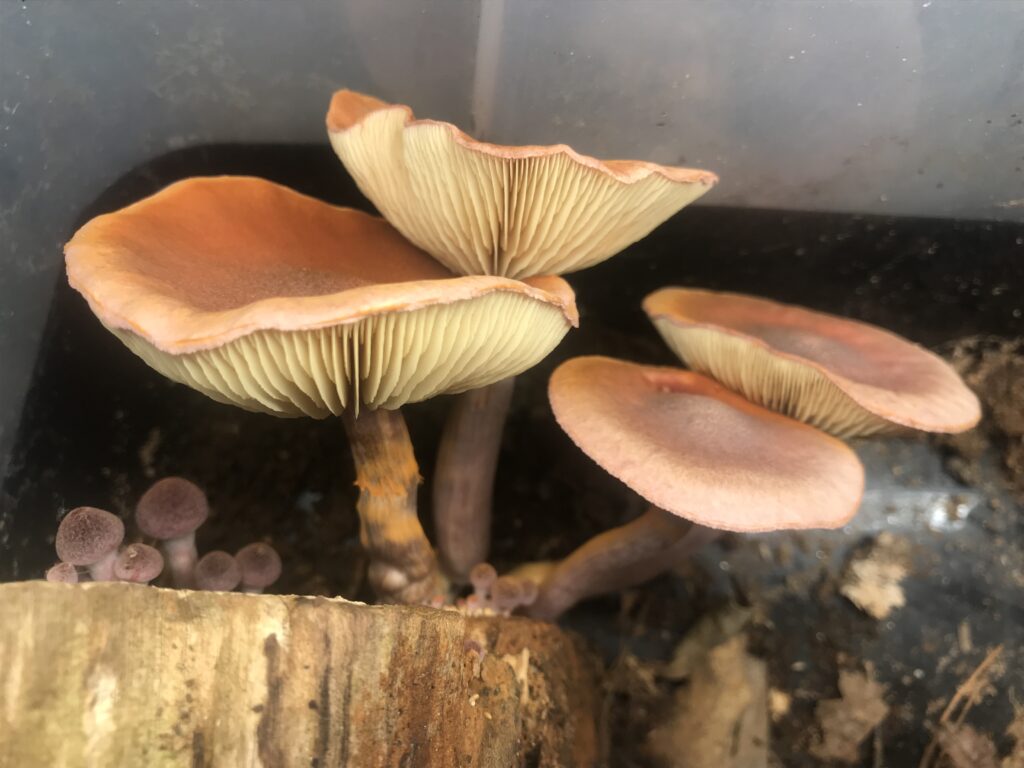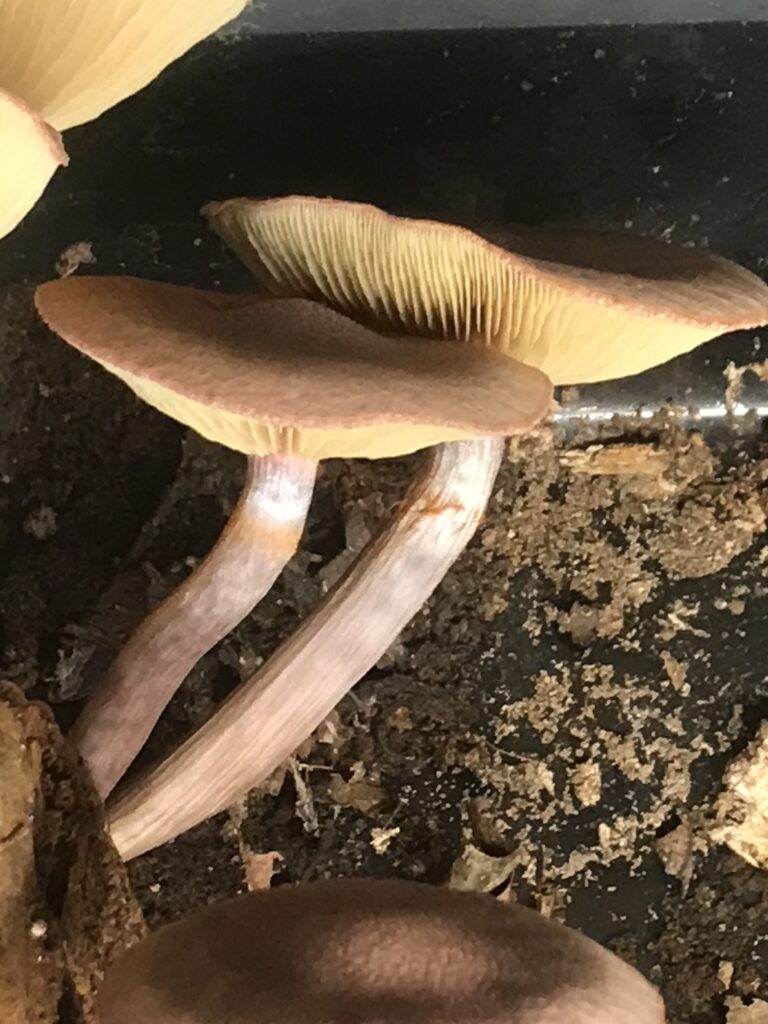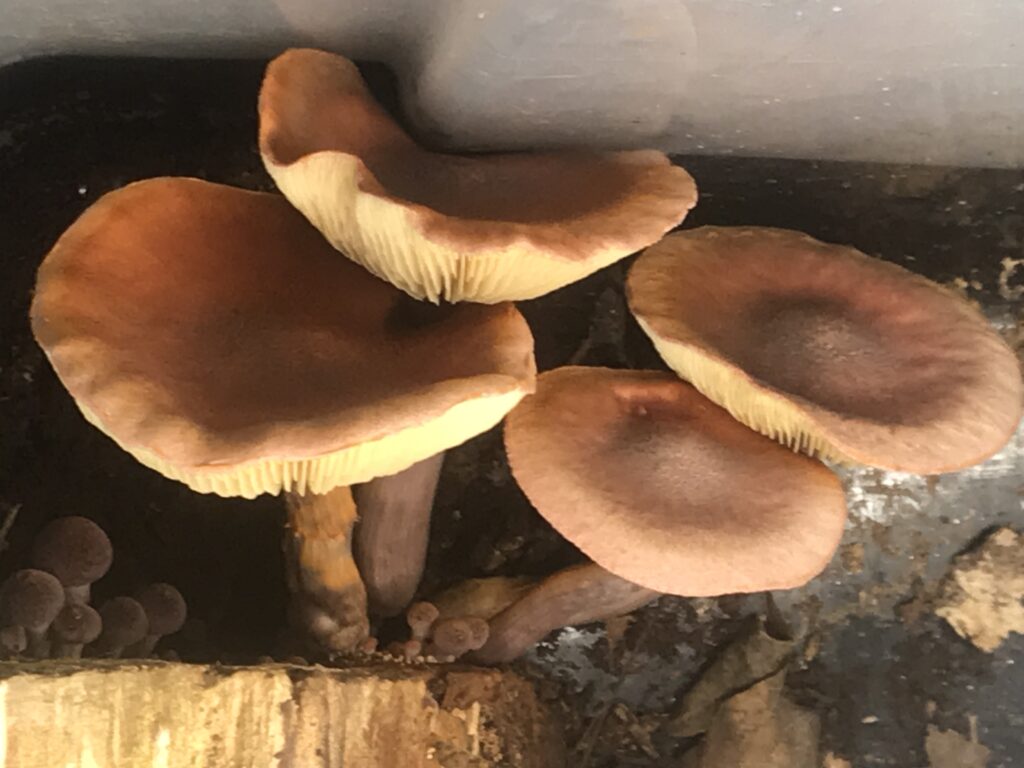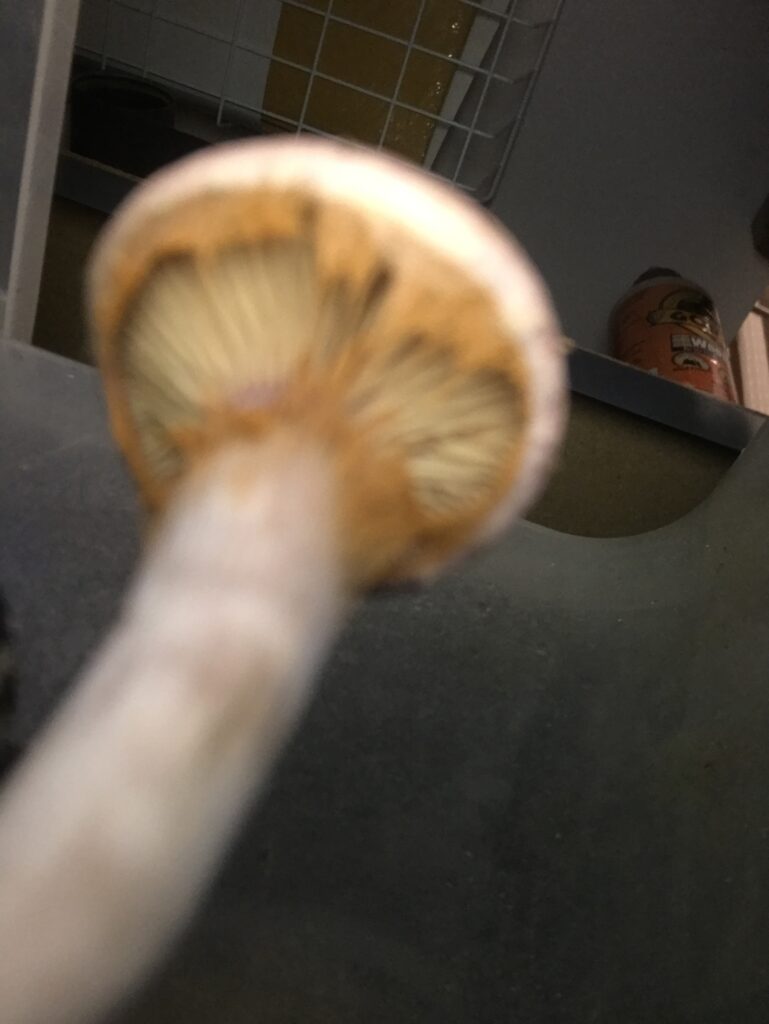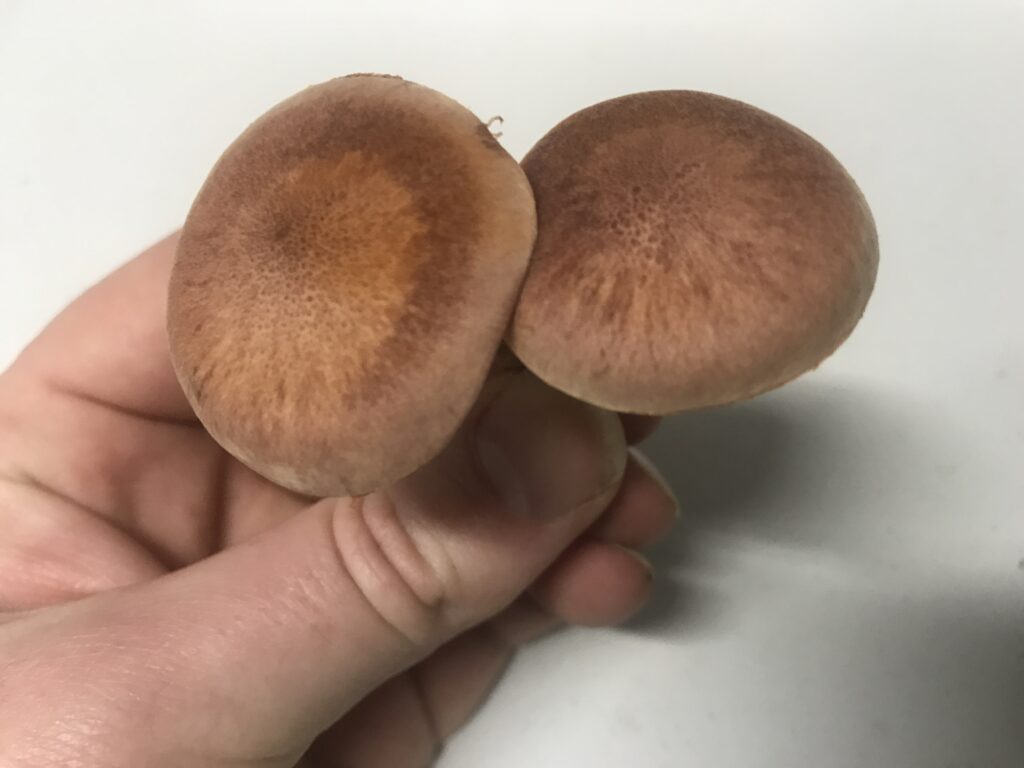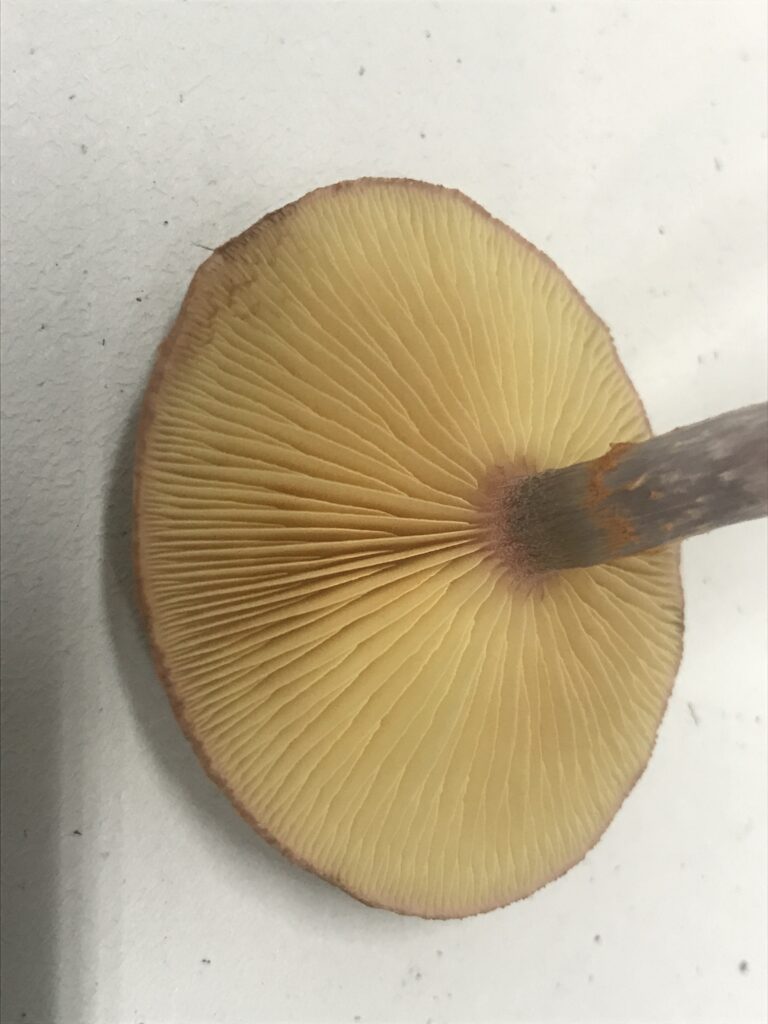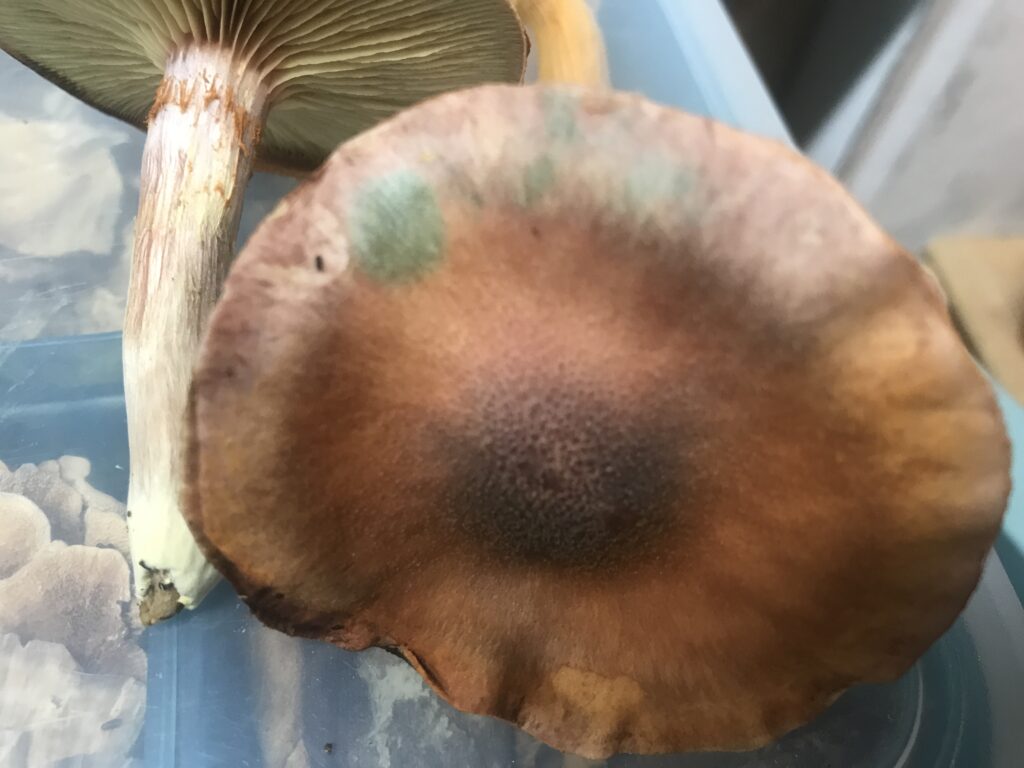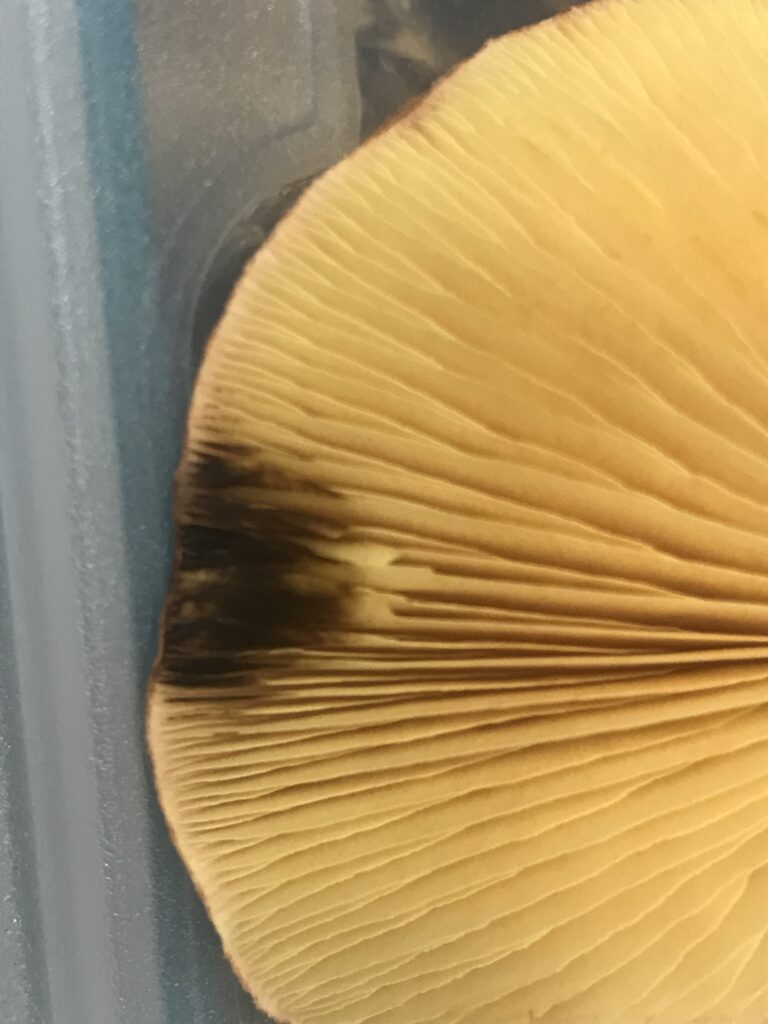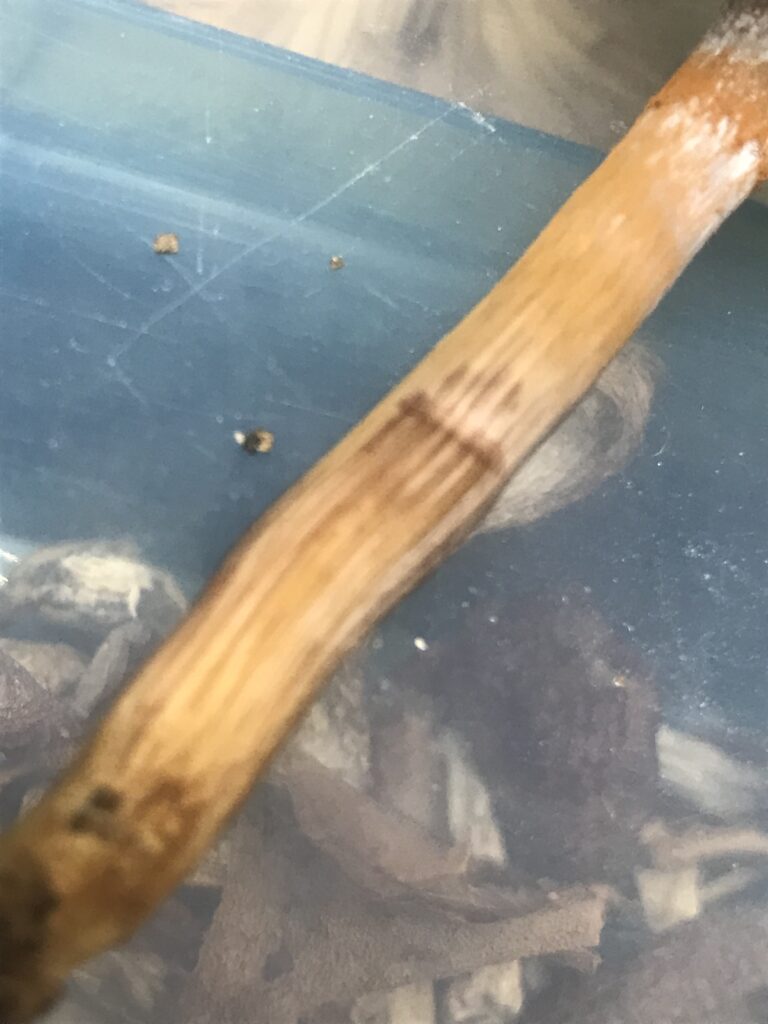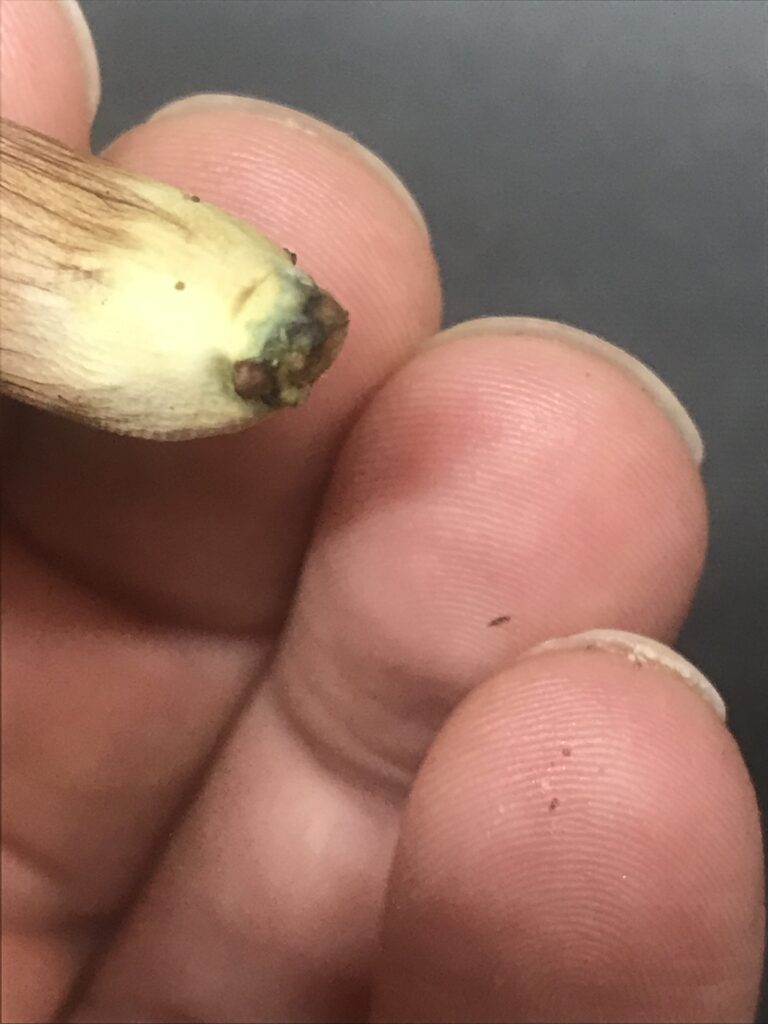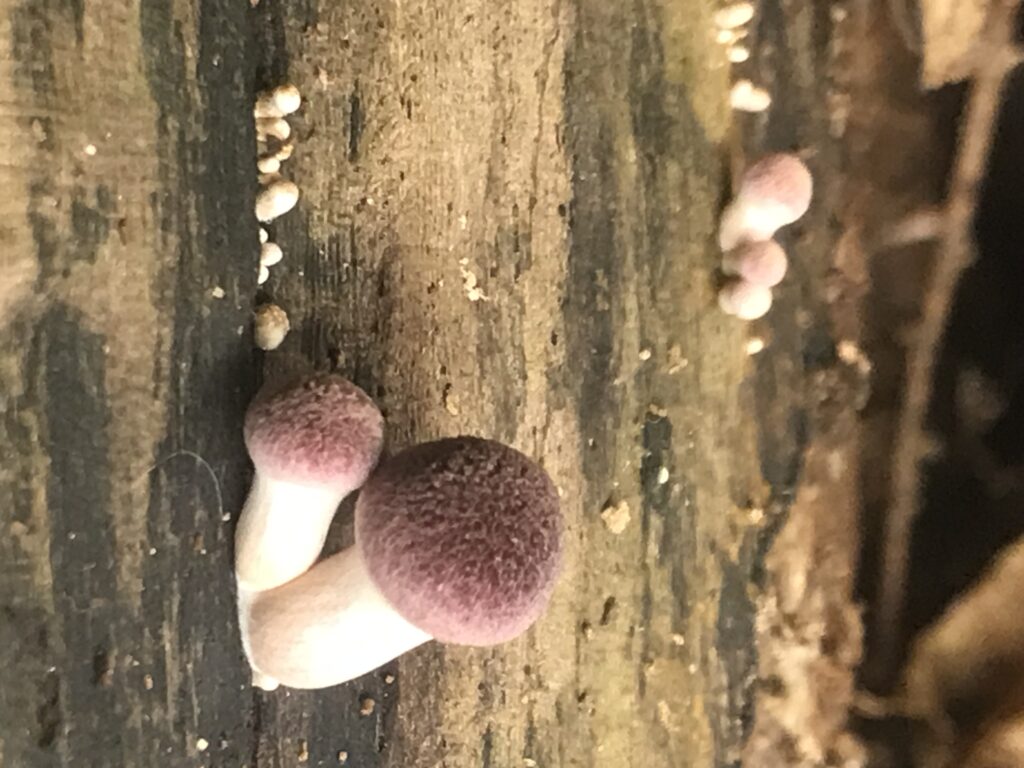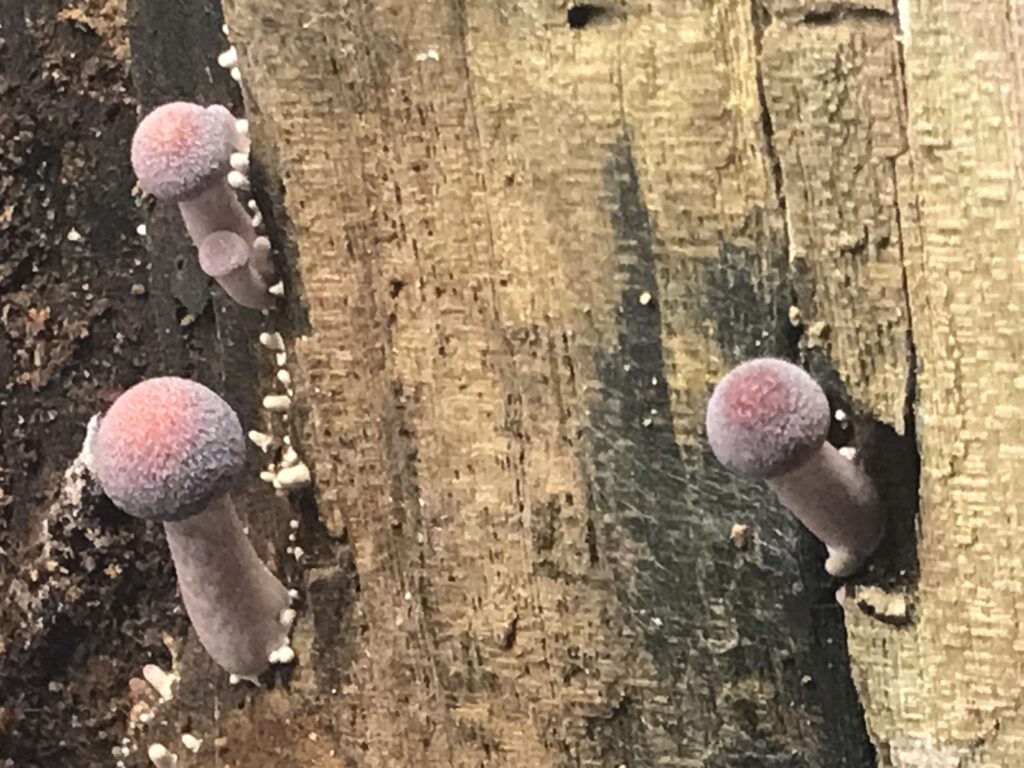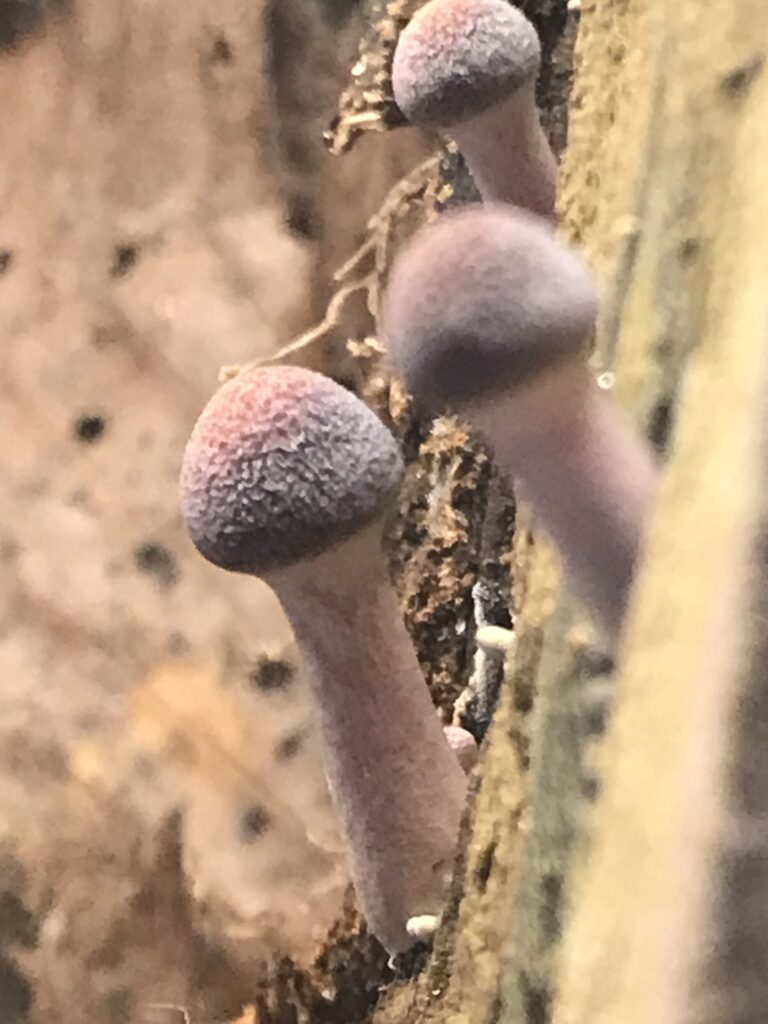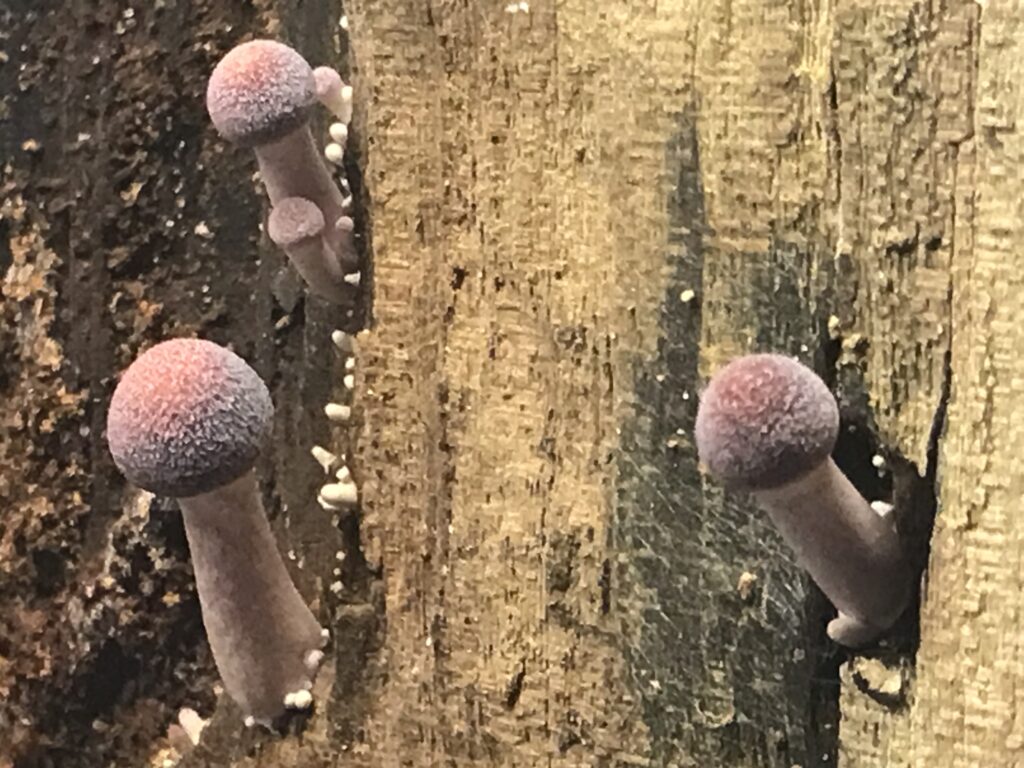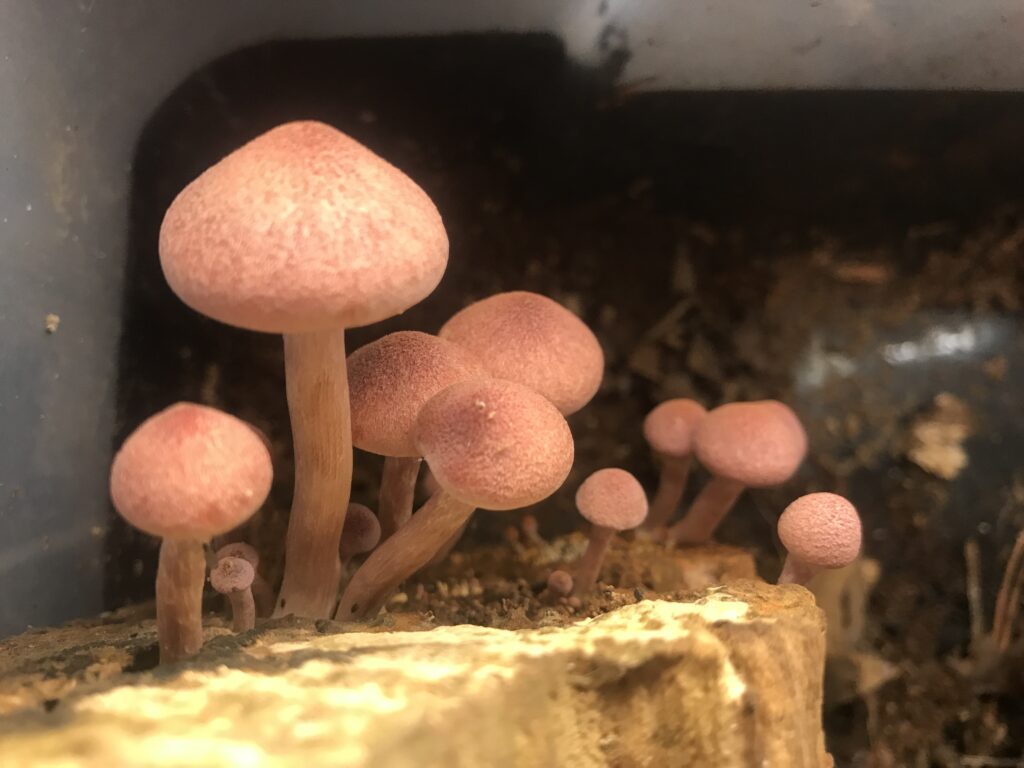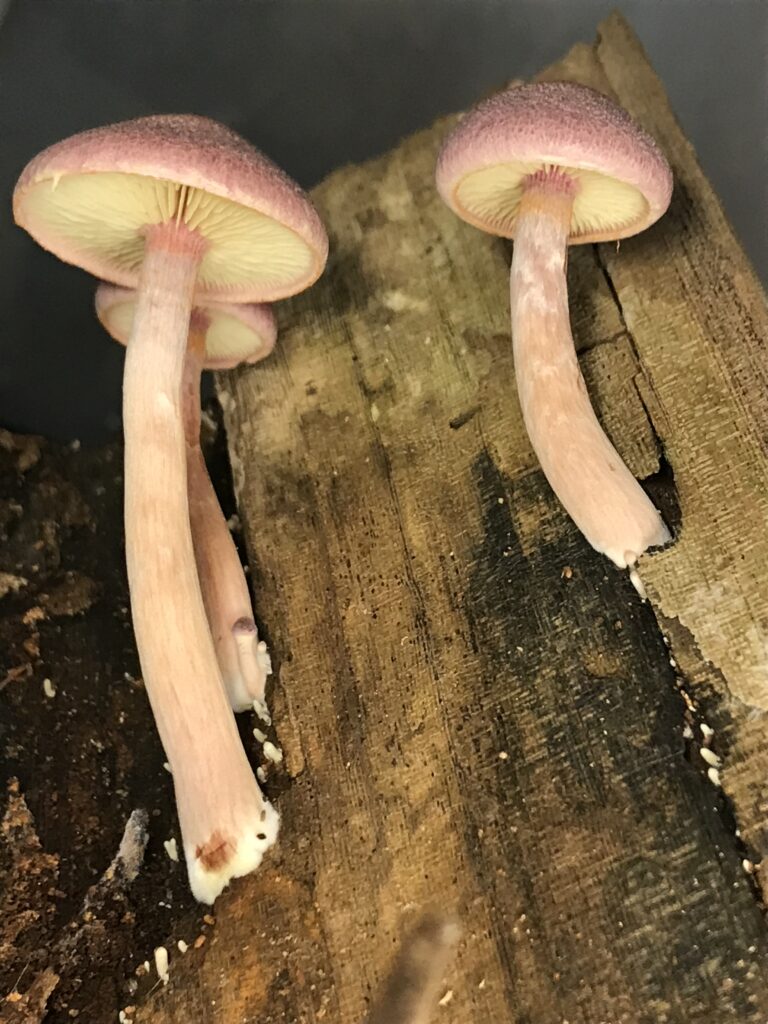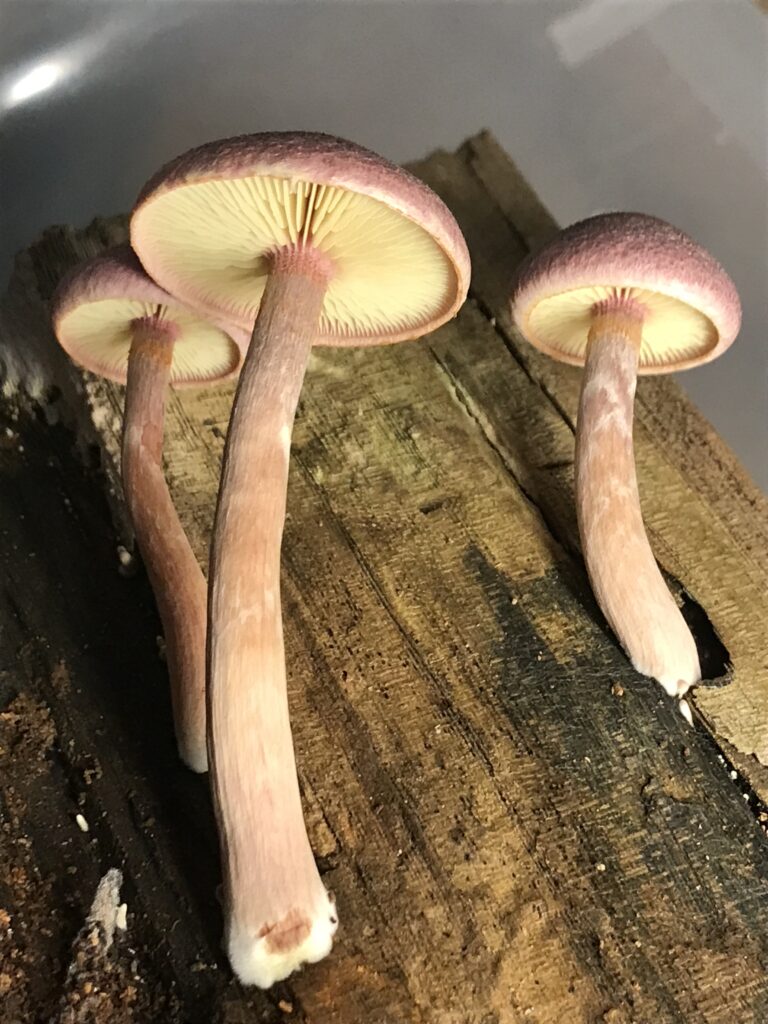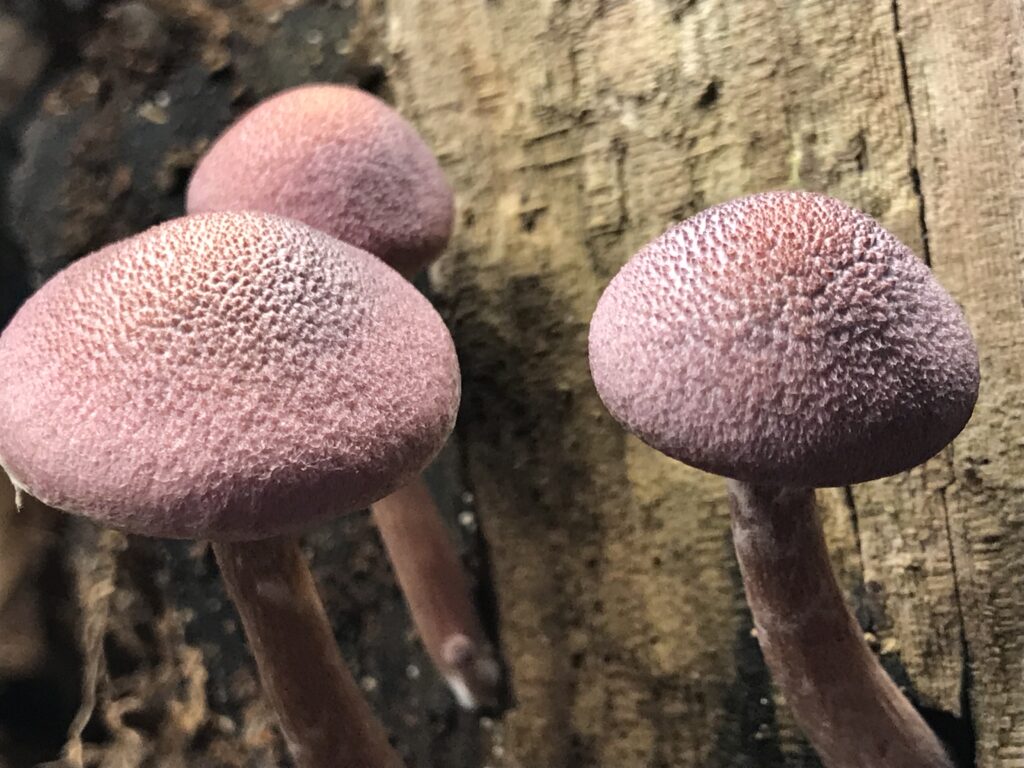| Ecology & Habitat | Saprotrophic Growing Singly or in Clusters Typically on hardwoods |
| Edibility, Taste & Odor | Unlike some other Gymnopolus species, it is not fragrant. Donning only a mild starchy odor. Very bitter May contain the hallucinogens psilocybin or psilocin |
| Cap | Small to Large, Flat, sometimes with a small umbo Most often a dark reddish or purplish, Turning orange-brown or yellow-orange with age. Sometimes staining green where damaged. Covered in fine hairs Soft and Dry Cap margin may contain some fringe or remnants of the cortina/inner veil. Inner flesh is white to light yellow, staining slightly pink at the center when sliced in half. |
| Gills | Gills are notched near stem attachment Close Starting out cream, maturing to yellow, and eventually turning orange when spores are released. |
| Stem | Center Straight even stem, sometimes enlarged at base where attached. Stem is similarly colored to cap, with reddish and yellowish vertical stripes fibrous, and somewhat distressed texture Hollow or Hollow with Pith usually showing some exposed fuzzy mycellium |
| Partial Veil | Cream Cortina leaving and orange spore laden ring zone, which may eventually disappear completely with age. |
| Mycellium | White Mycellium Fluffy to Fuzzy, not strongly Rhizomorphic |
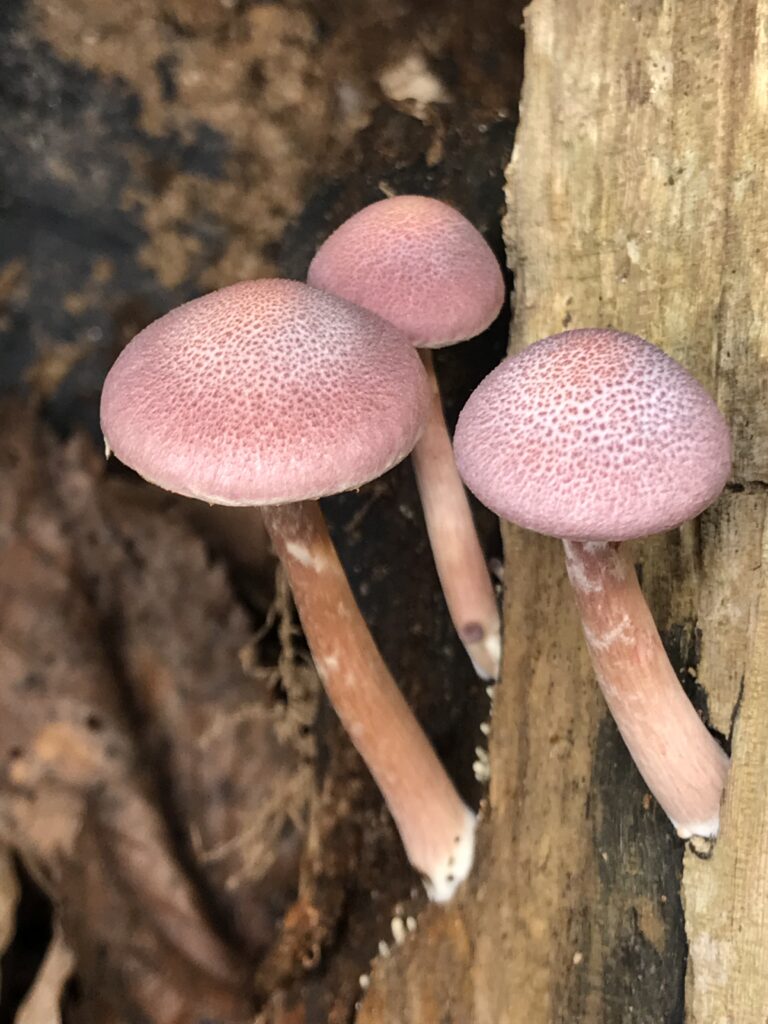
These specimens were originally found growing in my own yard in late October, and then a second flush came in mid-November. They had produced a large first flush but they had fully matured and then got soaking wet from several days of hard rain. I was fairly certain they were Gymnopolis based on the substrate and massive amount of orange spores, but the second flush made it undeniably clear.
